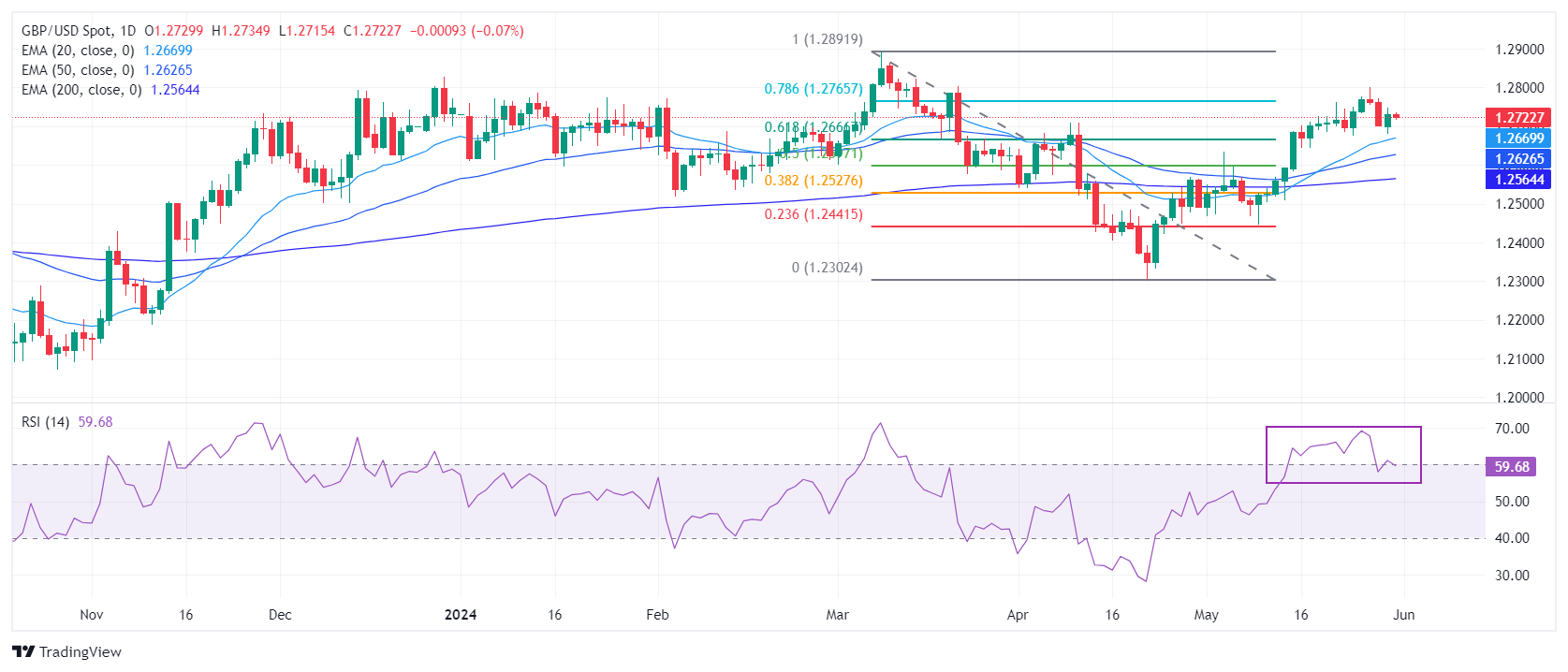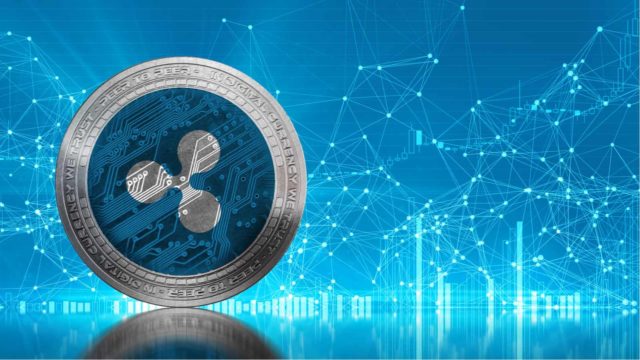- The British Pound rebounds strongly against the US Dollar as US PCE monthly core inflation turns out to be softer than expected.
- US annual core PCE inflation grew in line with estimates at 2.8%.
- Business optimism in the UK improves due to easing inflationary pressures and expectations of BoE rate cuts.
The British Pound (GBP) recovers intraday losses and jumps to 1.2750 in the American session on Friday. GBP/USD rises as US Core Personal Consumption Expenditure (PCE) Price Index data for April disappointed expectations. Core inflation grew at a slower pace of 0.2% from estimates and the previous release of 0.3%.
Annually, PCE core inflation data, which is the Federal Reserve's (Fed) preferred inflation measure, grew steadily by 2.8%. The scenario of annual core PCE data being in line with expectations is less likely to move the Fed toward rate cuts in September. Fed policymakers have said they want to see inflation decline for months before considering a policy normalization move.
Meanwhile, the soft monthly inflation reading has weighed heavily on the US Dollar. The US Dollar Index (DXY), which tracks the value of the Dollar against six major currencies, falls near 104.40.
Daily Market Summary: Pound Revives Losses as US Dollar Weakens
- The British Pound rises to 1.2750 against the US Dollar (USD). Pound rebounds as US dollar extends decline following release of soft monthly US core inflation reading
- The attractiveness of the US Dollar was already depressed due to the downward revision of the US first quarter Gross Domestic Product (GDP) data. The US Bureau of Economic Analysis (BEA) reported that the economy expanded at a slower pace of 1.3% due to lower consumer spending compared to the preliminary estimate of 1.6%.
- Downwardly revised GDP estimates weighed on the US dollar, and market speculation about the possibility of the Fed cutting interest rates in September rose to slightly above 50%. The Fed's rate cut prospects will be significantly influenced by PCE core inflation data.
- Meanwhile, Fed policymakers continue to emphasize keeping interest rates at their current levels until they get sufficient evidence that inflation will sustainably return to the desired 2% rate. On Thursday, Federal Reserve Bank of Dallas President Lorie Logan said inflation is on track to return to 2%, but the path appears to be slower and bumpier than expected at the beginning of the year, Reuters reports. Logan also said it's too early to consider rate cuts.
- On the UK front, the outlook for the economy has improved after a Lloyds Bank survey showed easing price pressures and firm expectations that the Bank of England (BoE) will begin cutting interest rates. interest earlier have driven business optimism to its highest level since November 2015.
- In the absence of top-line economic data from the UK, investors are looking for developments in the upcoming election. Exit polls show the Labor Party will come to power after almost 15 years of Conservative-led governments.
- The British pound could remain slightly volatile due to market expectations for the elections, but its impact on monetary policy is expected to be minimal. The outlook for the UK economy could change if Labor comes to power, but its fiscal plans are expected to remain conservative to avoid any upside risk to price pressures.
Technical Analysis: British Pound Aims to Recover 78.6% Fibonacci Retracement Near 1.27
The British Pound revives intraday losses against the US Dollar following the release of US Core PCE Price Index data for April. The short-term outlook for the GBP/USD pair remains optimistic as it remains above 1.2670, the 61.8% Fibonacci retracement (plotted from March 8 high of 1.2900 to April 22 low of 1.2300) . The pair is expected to extend its rise towards the 78.6% Fibonacci retracement near 1.2770.
The Pound is expected to remain on the bullish trajectory as all short-term EMAs are tilted upwards, suggesting a strong bullish trend.
The 14-period RSI has fallen into the 40.00-60.00 range, suggesting that the momentum, which was leaning towards the upside, has moderated for now.
Economic Indicator
Basic Personal Consumption Expenditures – Price Index (YoY)
Basic Personal Consumption Expenses (PCE), published monthly by the US Bureau of Economic Analysis, measure changes in the prices of goods and services purchased by consumers in the United States (US). The PCE Price Index is also the Federal Reserve's (Fed) preferred indicator of inflation. The YoY reading compares the prices of goods in the reference month with the same month of the previous year. The basic reading excludes the most volatile components of food and energy to give a more accurate measure of price pressures. Generally, a high reading is bullish for the US Dollar (USD), while a low reading is bearish.
Why is it important for traders?
After releasing the GDP report, the US Bureau of Economic Analysis releases Personal Consumption Expenditures (PCE) Price Index data along with monthly changes in Personal Expenditure and Personal Income. FOMC policymakers use the annual Core PCE Price Index, which excludes volatile food and energy prices, as their main indicator of inflation. A stronger-than-expected reading could help the USD outperform its rivals as it would hint at a possible aggressive change in the Fed's future guidance and vice versa.
Source: Fx Street
I am Joshua Winder, a senior-level journalist and editor at World Stock Market. I specialize in covering news related to the stock market and economic trends. With more than 8 years of experience in this field, I have become an expert in financial reporting.








